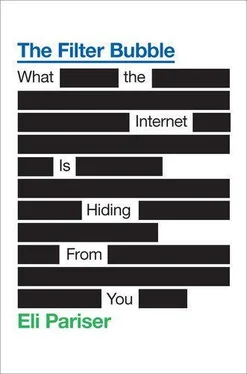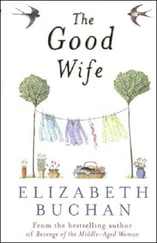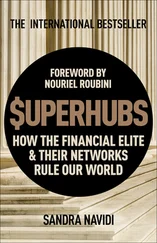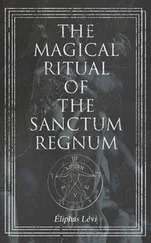Many Internet watchers (myself included) cheered the development of “people-powered news”—a more democratic, participatory form of cultural storytelling. But the future may be more machine-powered than people-powered. And many of the breakthrough champions of the people-powered viewpoint tell us more about our current, transitional reality than the news of the future. The story of “Rathergate” is a classic example of the problem.
When CBS News announced nine weeks before the 2004 election that it had papers proving that President Bush had manipulated his military record, the assertion seemed as though it might be the turning point for the Kerry campaign, which had been running behind in the polls. The viewership for 60 Minutes Wednesday was high. “Tonight, we have new documents and new information on the President’s military service and the first-ever interview with the man who says he pulled the strings to get young George W. Bush into the Texas Air National Guard,” Dan Rather said somberly as he laid out the facts.
That night, as the New York Times was preparing its headline on the story, a lawyer and conservative activist named Harry MacDougald posted to a right-wing forum called Freerepublic .com. After looking closely at the typeface of the documents, MacDougald was convinced that there was something fishy going on. He didn’t beat around the bush: “I am saying these documents are forgeries, run through a copier for 15 generations to make them look old,” he wrote. “This should be pursued aggressively.”
MacDougald’s post quickly attracted attention, and the discussion about the forgeries jumped to two other blog communities, Powerline and Little Green Footballs , where readers quickly discovered other anachronistic quirks. By the next afternoon, the influential Drudge Report had the campaign reporters talking about the validity of the documents. And the following day, September 10, the Associated Press, New York Times, Washington Post, and other outlets all carried the story: CBS’s scoop might not be true. By September 20, the president of CBS News had issued a statement on the documents: “Based on what we now know, CBS News cannot prove that the documents are authentic…. We should not have used them.” While the full truth of Bush’s military record never came to light, Rather, one of the most prominent journalists in the world, retired in disgrace the next year.
Rathergate is now an enduring part of the mythology about the way blogs and the Internet have changed the game of journalism. No matter where you stand on the politics involved, it’s an inspiring tale: MacDougald, an activist on a home computer, discovered the truth, took down one of the biggest figures in journalism, and changed the course of an election.
But this version of the story omits a critical point.
In the twelve days between CBS’s airing of the story and its public acknowledgment that the documents were probably fakes, the rest of the broadcast news media turned out reams of reportage. The Associated Press and USA Today hired professional document reviewers who scrutinized every dot and character. Cable news networks issued breathless updates. A striking 65 percent of Americans—and nearly 100 percent of the political and reportorial classes—were paying attention to the story.
It is only because these news sources reached many of the same people who watch CBS News that CBS could not afford to ignore the story. MacDougald and his allies may have lit the match, but it took print and broadcast media to fan the flames into a career-burning conflagration.
Rathergate, in other words, is a good story about how online and broadcast media can interact. But it tells us little or nothing about how news will move once the broadcast era is fully over—and we’re moving toward that moment at a breakneck pace. The question we have to ask is, What does news look like in the postbroadcast world? How does it move? And what impact does it have?
If the power to shape news rests in the hands of bits of code, not professional human editors, is the code up to the task? If the news environment becomes so fragmented that MacDougald’s discovery can’t reach a broad audience, could Rathergate even happen at all?
Before we can answer that question, it’s worth quickly reviewing where our current news system came from.
The Rise and Fall of the General Audience
Lippmann, in 1920, wrote that “the crisis in western democracy is a crisis in journalism.” The two are inextricably linked, and to understand the future of this relationship, we have to understand its past.
It’s hard to imagine that there was a time when “public opinion” didn’t exist. But as late as the mid-1700s, politics was palace politics. Newspapers confined themselves to commercial and foreign news—a report from a frigate in Brussels and a letter from a nobleman in Vienna set in type and sold to the commercial classes of London. Only when the modern, complex, centralized state emerged—with private individuals rich enough to lend money to the king—did forward-looking officials realize that the views of the people outside the walls had begun to matter.
The rise of the public realm—and news as its medium—was partly driven by the emergence of new, complex societal problems, from the transport of water to the challenges of empire, that transcended the narrow bounds of individual experience. But technological changes also made an impact. After all, how news is conveyed profoundly shapes what is conveyed.
While the spoken word is always directed to a specific audience, the written word—and especially the printing press—changed all that. In a real sense, it made the general audience possible. This ability to address a broad, anonymous group fueled the Enlightenment era, and thanks to the printing press, scientists and scholars could spread complex ideas with perfect precision to an audience spread over large distances. And because everyone was literally on the same page, transnational conversations began that would have been impossibly laborious in the earlier scribe-driven epoch.
In the American colonies, the printing industry developed at a fierce clip—at the time of the revolution, there was no other place in the world with such a density and variety of newspapers. And while they catered exclusively to the interests of white male landowners, the newspapers nonetheless provided a common language and common arguments for dissent. Thomas Paine’s rallying cry, Common Sense , helped give the diverse colonies a sense of mutual interest and solidarity.
Early newspapers existed to provide business owners with information about market prices and conditions, and newspapers depended on subscription and advertising revenues to survive. It wasn’t until the 1830s and the rise of the “penny press”—cheap newspapers sold as one-offs on the street—that everyday citizens in the United States became a primary constituency for news. It was at this point that newspapers came to carry what we think of as news today.
The small, aristocratic public was transforming into a general public. The middle class was growing, and because middle-class people had both a day-to-day stake in the life of the nation and the time and money to spend on entertainment, they were hungry for news and spectacle. Circulation skyrocketed. And as education levels went up, more people came to understand the interconnected nature of modern society. If what happened in Russia could affect prices in New York, it was worth following the news from Russia.
But though democracy and the newspaper were becoming ever more intertwined, the relationship wasn’t an easy one. After World War I, tensions about what role the newspaper should play boiled over, becoming a matter of great debate among two of the leading intellectual lights of the time, Walter Lippmann and John Dewey.
Читать дальше











